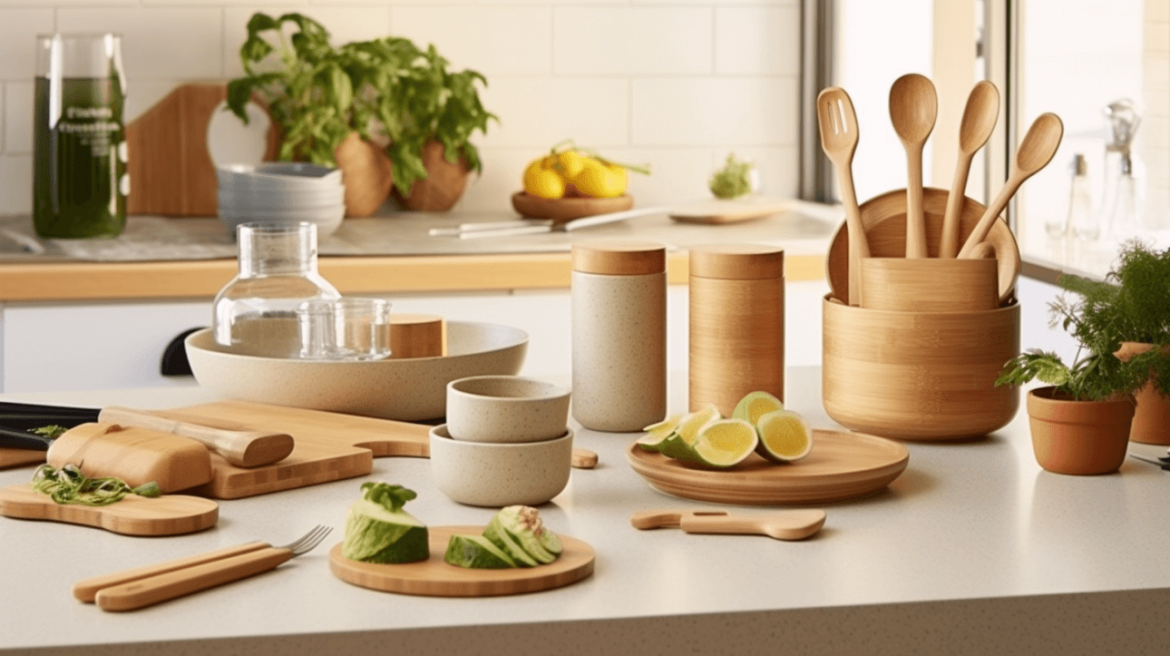Embracing sustainability in the kitchen has never been more crucial. As eco-awareness rises, so does the demand for sustainable kitchenware. This trend isn’t just about style, it’s a commitment to the health of our planet and ourselves. Discover how green gourmet tools are revolutionizing our cooking spaces.
Understanding Sustainable Kitchenware
Sustainable kitchenware goes beyond mere eco-friendly labels, it’s about products that minimise environmental impact through their entire lifecycle. Sustainable Offers epitomises this ethos, providing kitchen tools made from renewable resources like bamboo and recycled materials. Their offerings ensure that every stir and slice is a step towards a healthier planet. By choosing items that are biodegradable, non-toxic, and crafted to last, you’re not just equipping your kitchen; you’re endorsing a movement.
Why Sustainable Kitchenware is Gaining Popularity
The surge in popularity of sustainable kitchenware stems from a growing consciousness about our environmental footprint and its impact on future generations. As consumers become more informed, the appeal of products that offer both eco-friendliness and personal health benefits is increasing.
Sustainable kitchenware is crafted from materials that are safe for both the planet and our families. These non-toxic alternatives to plastic and Teflon-coated products avoid the leaching of harmful chemicals, thus ensuring a cleaner, greener cooking experience.
The durability of sustainable kitchen items often means they outlast their conventional counterparts, proving to be a wise investment over time. This movement towards sustainability in the culinary sphere reflects a broader shift towards responsible consumption, showcasing a preference for quality and sustainability over disposability.
Spotlight on Innovation: Eco-Friendly Kitchen Gadgets
Innovation in the sustainable kitchenware market is not just thriving, it’s redefining culinary practices:
- Biodegradable Utensils: Companies like Sustainable Offers are introducing utensils made from plant-based materials that compost naturally after use.
- Solar-Powered Appliances: The latest gadgets include solar-powered ovens and grills, harnessing clean energy for cooking.
- Silicone Baking Mats: Reusable, easy to clean, and durable, they are replacing disposable parchment paper.
Eco-friendly kitchen gadgets are gaining traction for their innovative approach to sustainability and functionality. Notably, advancements in material science have led to the creation of products that are both kind to the environment and highly efficient in use. For instance, utensils crafted from recycled or biodegradable materials not only reduce waste but also showcase creative design, making sustainable living stylish. Similarly, solar-powered appliances push the boundaries of traditional cooking methods, offering a new, energy-saving way to prepare meals.
As consumers lean towards greener options, these innovations are rapidly becoming kitchen mainstays, cementing their place at the forefront of the eco-conscious movement.
The Role of Consumers and Chefs in the Eco-Kitchen Movement
Consumers and chefs play a pivotal role in the eco-kitchen movement, each driving the demand for sustainable kitchenware from the ground up. Discerning buyers, by opting for sustainable products, send a powerful message to the market, voicing their preference for environmentally responsible goods. This consumer influence shapes industry trends and encourages manufacturers to innovate sustainably.
Simultaneously, chefs who champion eco-friendly practices become instrumental in educating the public about the benefits of sustainable cooking. Their endorsements of durable, non-toxic, and waste-reducing kitchen gadgets provide credibility and push these products from niche to norm.
Together, consumers and culinary professionals are key catalysts in this green transformation, making conscious choices that ripple through the supply chain, inspiring an industry-wide embrace of sustainability that’s redefining gastronomy.
How to Transition to a Sustainable Kitchen
Transitioning to a sustainable kitchen is a journey of mindful choices, starting with the selection of kitchenware that aligns with eco-friendly values. Begin by assessing your current kitchenware collection and consider replacing them with alternatives that are sourced from sustainable materials.
Look for items made from renewable resources like bamboo, stainless steel, or recycled glass. Incorporate reusable products such as beeswax wraps instead of cling film, and durable silicone lids to replace disposable covers. Gradually phase out plastic containers and utensils, favouring those that promote longevity and are kind to the environment. Embracing this change doesn’t require an overnight overhaul but can be achieved through thoughtful, incremental updates to your culinary arsenal, ensuring each addition to your kitchen contributes to a more sustainable lifestyle.
The Future of Kitchenware: Sustainable Trends to Watch
The future of kitchenware is set to be defined by sustainability, with several trends emerging as game-changers:
- Compostable Materials: Expect to see an increase in kitchenware made from fully compostable substances, reducing landfill waste.
- Smart Energy Usage: Advancements in energy-efficient appliances that reduce electricity consumption are on the horizon.
Sustainable trends in kitchenware are swiftly moving towards innovations that offer environmentally sound and technologically savvy solutions. The focus on materials designed for compostability is set to reduce our ecological footprint significantly. In the meantime, the advent of appliances with smart energy usage not only promises to cut down on power bills but also to conserve natural resources.
These trends are a glimpse into a future where kitchenware is synonymous with sustainability, reflecting a global commitment to environmental responsibility. Keep an eye on these developments, as they are likely to shape kitchen practices and consumer choices in the years to come.
Thank you for reading we hope this article has been beneficial to you!


